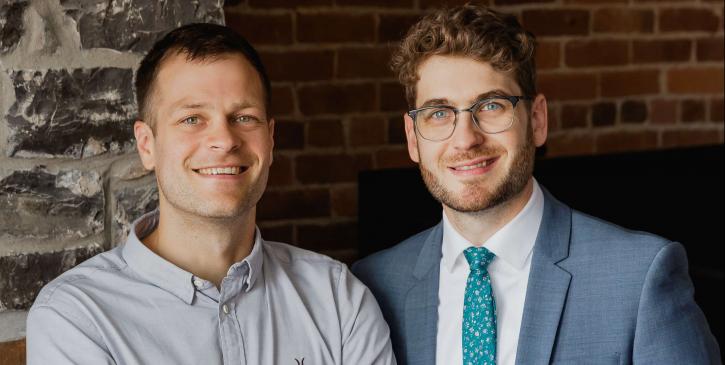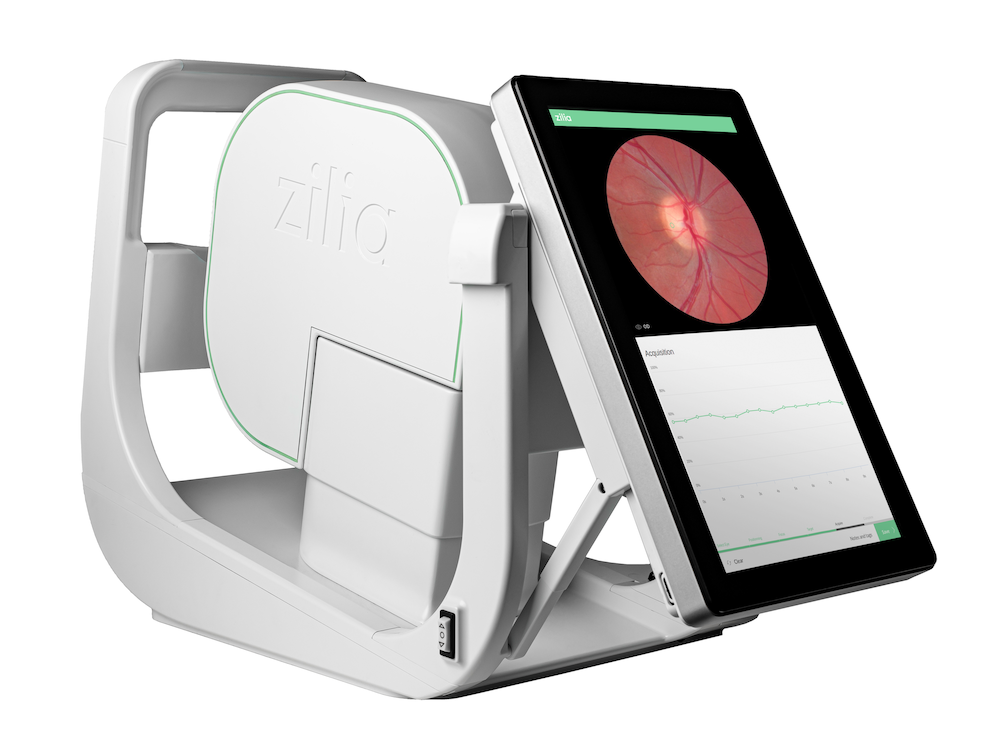With Zilia, the Eye Becomes a Window Into a Person’s Health

This Québec City company has developed a revolutionary technological platform that aims to detect serious ocular diseases before damage is caused to the eye. It was then realized that the eye was only the start of this adventure.
Between now and 2030, it is estimated that the prevalence of the main ocular diseases causing blindness will increase dramatically: by 81% for glaucoma, 63% for diabetic retinopathy and 89% for age-related macular degeneration. The question is this: is there no medical technology that would help in intervening before eye damage is caused? The answer to this question could well be found in Zilia’s Grande Allée boulevard offices in Québec City, where a multidisciplinary team is developing the Zilia Ocular platform.
Interview with Patrick Sauvageau, co-founder and CEO of this Québec start-up.
Q: What is Zilia?
PS: Zilia is a company that we founded to develop a device that measures biomarkers in the eye, starting with ocular oximetry, i.e. measurement of oxygenation in regions of the retina. I worked on this as part of my Master’s degree in optometry and, during all those years, I remained firmly convinced that this field of research was too important to be “shelved.” In fact, for years we have known how important oxygen regulation is for the human eye but no clinical measurement tools existed. We only had research tools. In 2012, my brother, Dominic, and I pooled our expertise (he is an engineer and I am an optometrist) to found Zilia.
We began like many start-ups … in a garage. We did our homework. In 2017, we obtained our first patent and secured our first round of financing. We put together an impressive team and today, as a result of this team’s work, Zilia Ocular—the device that we developed—is now available for experimental use.
Q: How is Zilia Ocular changing things?
PS: Zilia Ocular is the first retinal camera that enables the continuous measurement of oxygenation in the human eye. This represents the third revolution in eye care. Retinal cameras were developed in the 1980s, while retinal scans became available in the 2000s. Both forms of technology constituted major advances at the time. Our technology provides metabolic information, which paves the way for entirely new diagnostic opportunities.
Q: How does it work?

PS: We combine three forms of technology: imaging, spectrometry and AI. We use light to acquire images and spectral information from a specific location of the eye fundus. An algorithm then extracts the known absorption spectra of biomarkers, starting with oxygenated and deoxygenated hemoglobin, to calculate effective oxygen saturation. We believe that this will allow us to detect ocular diseases such as glaucoma, diabetic retinopathy and macular degeneration well before this is possible using traditional technology. For patients, this could mean much earlier treatment. It could also pave the way for pharmaceutical companies to develop new drugs. And, more broadly, early diagnosis could clearly contribute to reducing healthcare costs and improving patient quality of life.
But this is just the first step.
Q: What do you mean?
PS: We are only beginning to explore areas where our technology could be used, and the possibilities are almost endless. That is because, in actual fact, the eye is a window into a person’s health. Since the retina is part of the brain, we could conceivably use related data to measure neurological biomarkers. By using non-invasive technology to access blood vessels, we can also measure biomarkers of cardiovascular disease and even cancer. Zilia can contribute to fields of medicine well beyond vision care. We are talking about neurology, oncology, pharmacology, sports medicine, emergency medicine, etc. … This technology has the potential to change the paradigm for the diagnosis and clinical management of a multitude of health problems.
Q: What is your business plan?
PS: Our first challenge is to establish our priorities! We are initially focussing on the eye care professionals market, starting with the U.S., Canada and Europe. This represents more than 450,000 professionals worldwide. We are working to make Zila Ocular the clinical gold standard within the next five years. After that, we will expand into other areas of application.
Q: How can outside investors support your business plan?
PS: We are in a field where there is a constant need for capital due to development costs and the cost of obtaining regulatory approval. However, in addition to capital the entire ecosystem supporting innovation is important. We can rely, in particular, on the Institut national d’optique., the optics/photonics cluster as well as an excellent network of universities and engineering and AI graduates. We also have access to cutting-edge scientific and technological resources. And we are lucky to be able to rely on mentors—for scientific endeavours or venture capital projects.
Q: Where will Zilia be in five years?
PS: We have successfully developed a revolutionary clinical diagnostic tool in three years, so are very optimistic about what the future holds. There is no doubt in the minds of industry influencers that ocular oximetry is the way of the future. In a way, we are arriving from left field with a “disruptive” approach but we have the seal of approval of the scientific community. I have good reason to believe that we will become a leader in this field and that we will help to save the eyesight of millions of patients. And then, it will have to be determined where we stand with regard to the promising applications on which we are starting to focus our attention.
ZILIA AT A GLANCE
Amorce du projet :
2012
Premier brevet :
2017
Première ronde d’investissement :
2017
Premier appareil prêt pour usage expérimental :
2020
Solution offerte :
Analyse des biomarqueurs dans l’œil, en commençant par l’oxymétrie oculaire
Nombre d’employés :
17
Stade d’investissement :
Série A
Ambition :
Contribuer à sauver la vue et à améliorer la santé de millions de gens